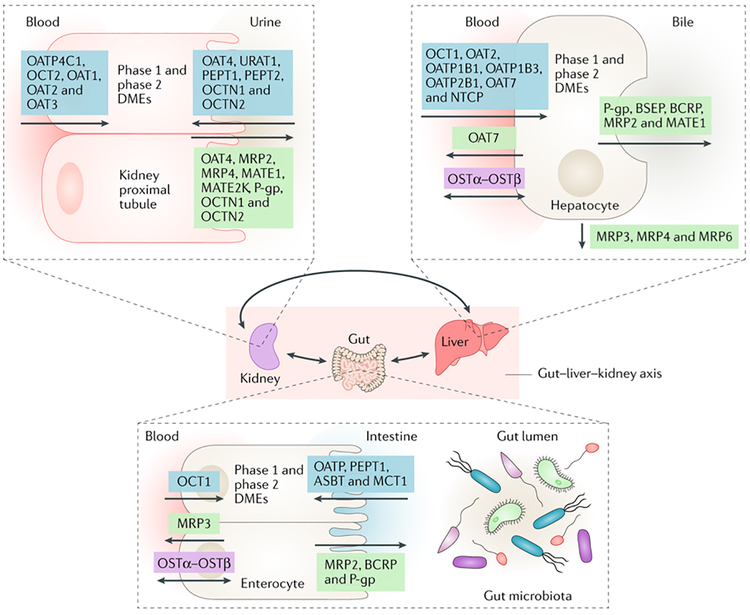Figure 2. The gut–liver–kidney axis.
Within the remote sensing and signaling communication network, the gut–liver–kidney axis drives the absorption, distribution, metabolism and excretion of small molecules, including endogenous metabolites, signaling molecules, products of the gut microbiota, nuclear receptors and antioxidants. Products derived from gut microbiota that cross the intestinal barrier are removed from the blood by solute carrier (SLC) and ATP-binding cassette (ABC) transporters on hepatocytes, where they (and other small molecules) are metabolized by phase 1 and phase 2 drug-metabolizing enzymes (DMEs). Ultimately, many of these products are cleared from the body via the kidney in the urine through the action of SLC and ABC transporters on the proximal tubule cells. Some transporters in different tissues are thought to function in both directions. MATE1, multi-drug and toxin extrusion protein 1; MATE2K, 2K splice variant of MATE2; OAT, organic anion transporter; OATP, organic anion-transporting polypeptide; OCT, organic cation transporter; P-gp, P-glycoprotein.

